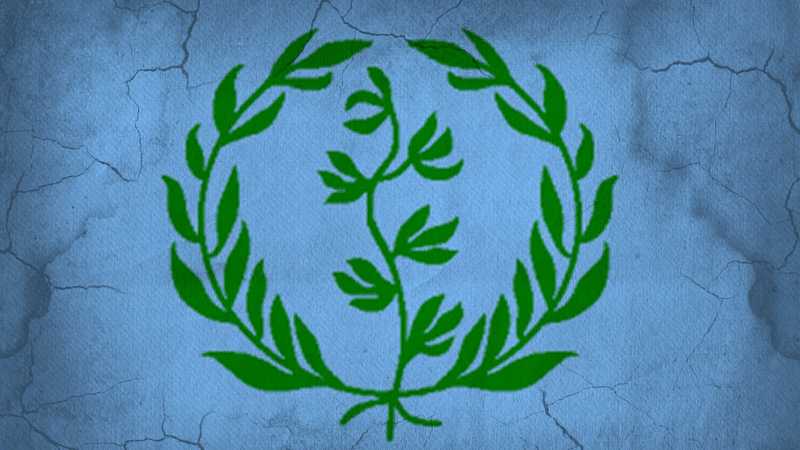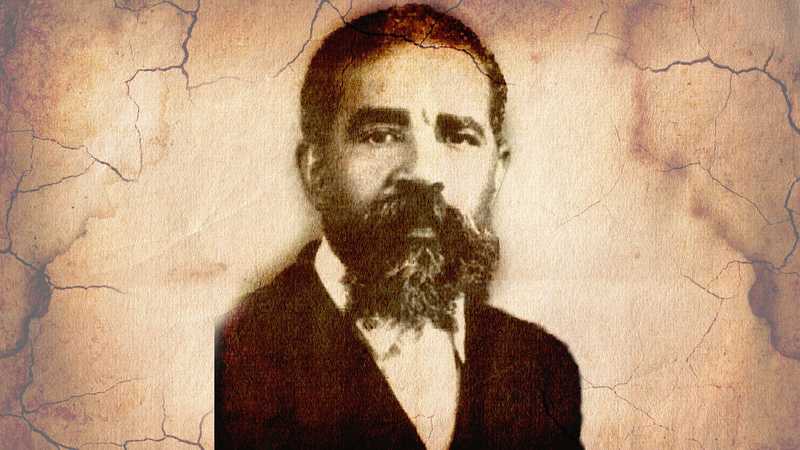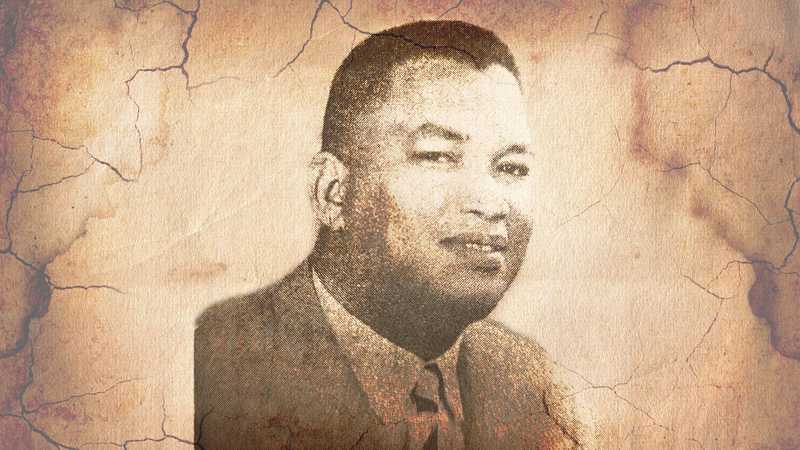Eritrean Flag was Banned
24 Dec, 1958
The Eritrean flag with the green olive wreath on a sky-blue background was banned by the Ethiopian government further eroding the autonomy of the Government of Eritrea.
 The flag of the Federal State of Eritrea, 1952
The flag of the Federal State of Eritrea, 1952
By 1958, the Eritrean Parliament had become dominated by supporters of the Union with Ethiopia, politically-illiterate priests and sheiks, and business people whose interests lay somewhere else. Its power had waned and its drive and fervor were not as they were when it was established. Although the president was Sheik Hamid Ferej Hamd, the power lay with the priest Qeshi Dimetros Gebremariam, who had become the Ethiopian government’s main instrument in the parliament.
 Qeshi (priest) Dimetros Gebremariam, who was instrumental in the Eritrean Parliament in pushing the Ethiopian Government’s goal of annexing Eritrea
Qeshi (priest) Dimetros Gebremariam, who was instrumental in the Eritrean Parliament in pushing the Ethiopian Government’s goal of annexing Eritrea
Qeshi Dimetros was a staunch supporter of Eritrea’s full union with Ethiopia. And so his mission was to garner enough votes to erode the autonomy of the federated Eritrean government. As such, he used many schemes to accomplish this. He would entice members of parliament with jobs for their relatives within the imperial government offices, salary increases, concessions and even direct cash payment at times. By doing so before any major upcoming bills or agendas of interest, he had members lined up to do his will, and indirectly that of the Imperial Government of Ethiopia.
When it was decided to permanently remove the sky-blue flag of the State of Eritrea, a clever scheme was set to bring up the agenda by outlining how the colors were not defined in the constitution and that it had to be properly addressed in the congress.
Meanwhile, Andargachew Mesai was promoted to Ras (Duke) by Emperor Haile Selassie. He was appointed both as the governor of Eritrea as an Enderassie (personal representative of the Emperor) and the Minster of Interior Affairs of Ethiopia simultaneously. In legal terms, this practically brought Eritrea under the jurisdiction of the Ethiopian Government as a province.
Once all the above were carefully orchestrated, the stage was set for the announcement and subsequent vote. President Hamid Ferej brought the bill to the floor as the “correction of the flag of the Eritrean government.” Many were caught off-guard by this as they would remember later. A message from the Imperial Government was read to the parliament by Fitawrari Asfaha Woldemichael, the second representative of the Crown at the time, claiming it was not right to divide one people with two flags. The message further rebuked the parliamentarians, also him being Eritrean by birth, that as Ethiopians not honoring the flag for which many of “our fathers and brothers have shed their blood, sacrificed themselves and worked hard is absolutely the wrong of wrongs.”
 Fitawrari Asfaha Woldemichael, representative of the Ethiopian Imperial Government, who would later become the governor of Eritrea
Fitawrari Asfaha Woldemichael, representative of the Ethiopian Imperial Government, who would later become the governor of Eritrea
The votes were cast right away without any of the 20-day debate period the Constitution of the time dictated on proposals. The majority voted as was expected of them and many who tried to oppose the motion saw what was at play and quietly let go.
The Eritrean flag with the green olive wreath on a sky-blue background was banned permanently, further eroding the autonomy of the Government of Eritrea.
